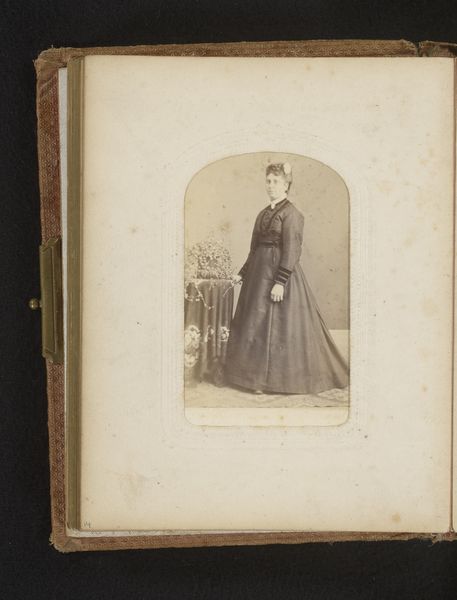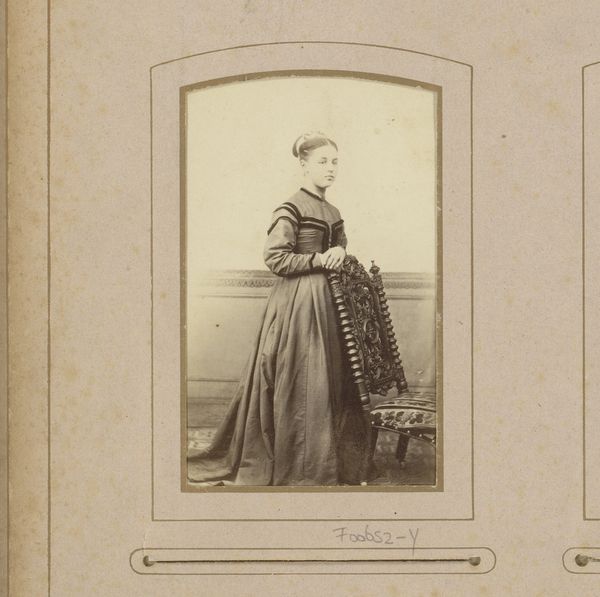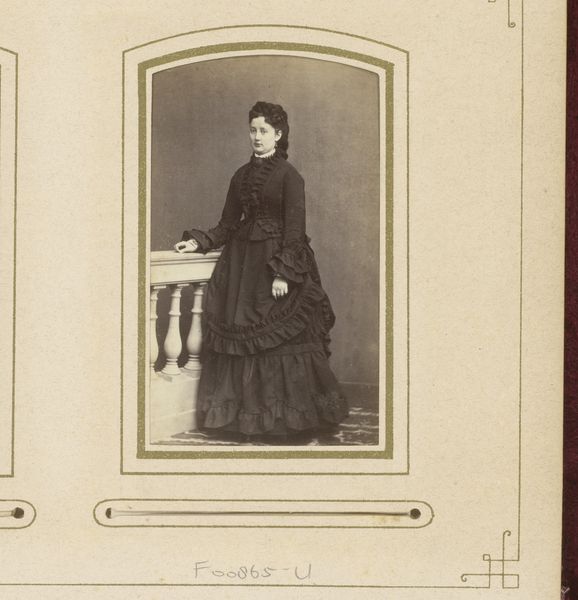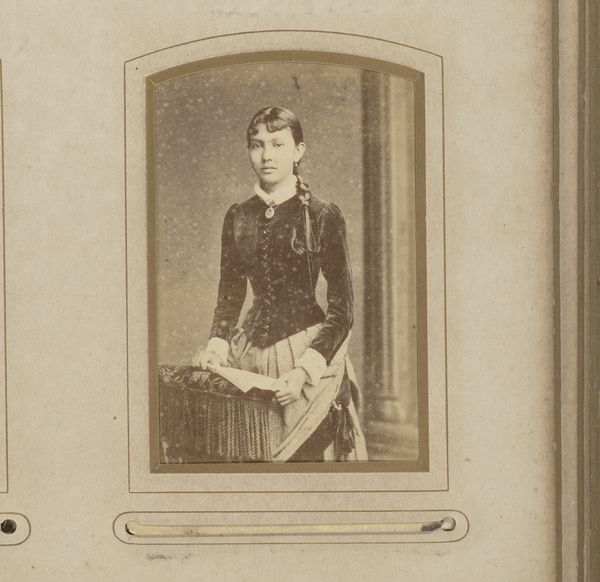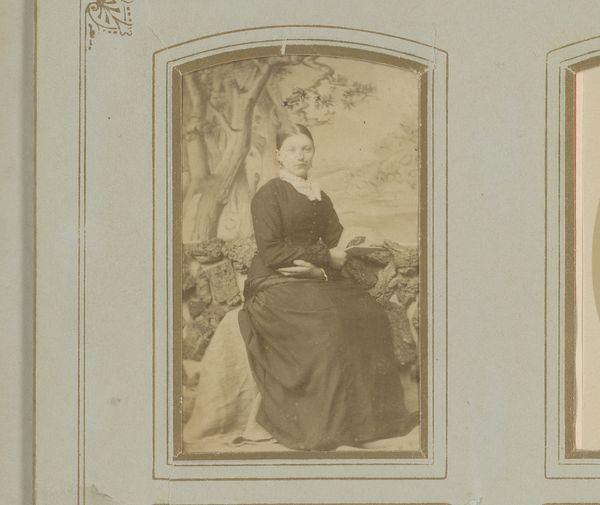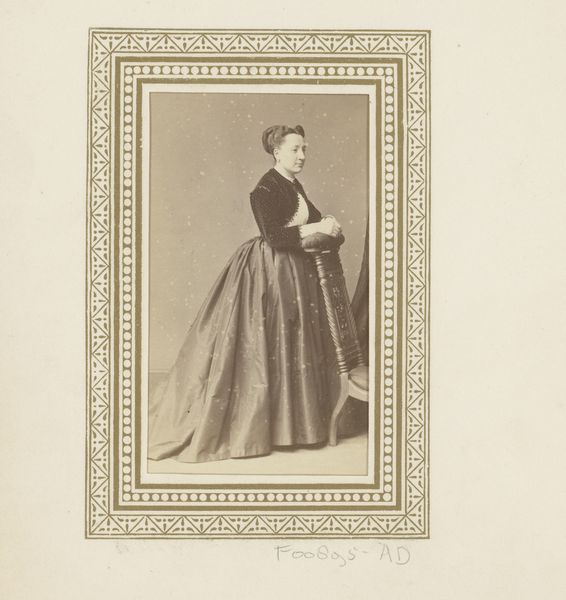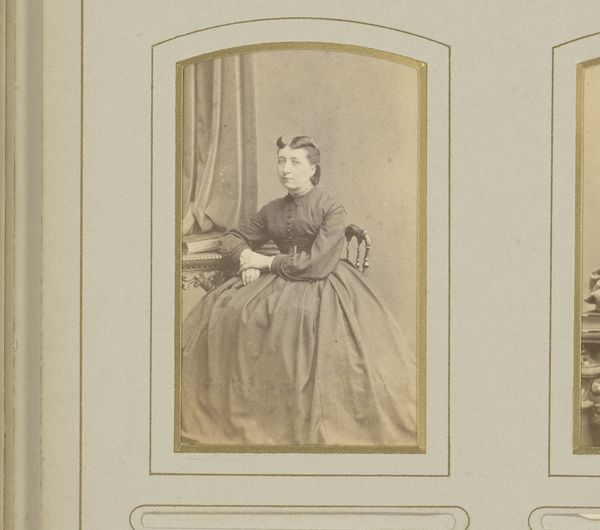
print, photography
#
portrait
# print
#
book
#
photography
#
genre-painting
#
realism
Dimensions: height 80 mm, width 52 mm
Copyright: Rijks Museum: Open Domain
Curator: What a pensive portrait. I am immediately drawn to the subdued, almost melancholy, mood. Editor: Indeed. We're looking at a photograph titled "Portret van een staande vrouw met boek," which translates to "Portrait of a standing woman with book". It was created sometime between 1860 and 1900 by Hermanus Arnoldus Mens. Curator: The book acts as such a strong symbol of knowledge and perhaps escape, don't you think? Her slightly downcast eyes speak to the introspective nature that was valued in women during this period, also reinforced by her high-necked, dark garment. The floral details are also evocative, of course, bringing associations of cultivation. Editor: I would agree, and in terms of its cultural impact, we see this as part of a broader trend in genre paintings and early photography towards realism. This pursuit sought to document the world as it was, often focusing on the burgeoning middle class and their everyday lives. Curator: And photography's democratizing force should not be overlooked! While portraiture used to be the domain of the wealthy who could afford painted commissions, now photography allows a wider range of social classes access to a captured likeness of the self, but within a circumscribed field of acceptable depictions. Editor: That’s an excellent point. We have to consider how the act of portraiture itself changes with the rise of photography and what role this played in identity construction at the time. The sitter and the photographer actively perform certain roles and negotiate their position in a quickly shifting social landscape. Curator: It’s intriguing how a single image can hold so many layers of meaning— social status, knowledge, feminine ideals. Editor: Absolutely, considering this "snapshot" in the broader cultural milieu reveals much about 19th century societal values. It helps us unravel narratives beyond just the sitter's individual story.
Comments
No comments
Be the first to comment and join the conversation on the ultimate creative platform.



